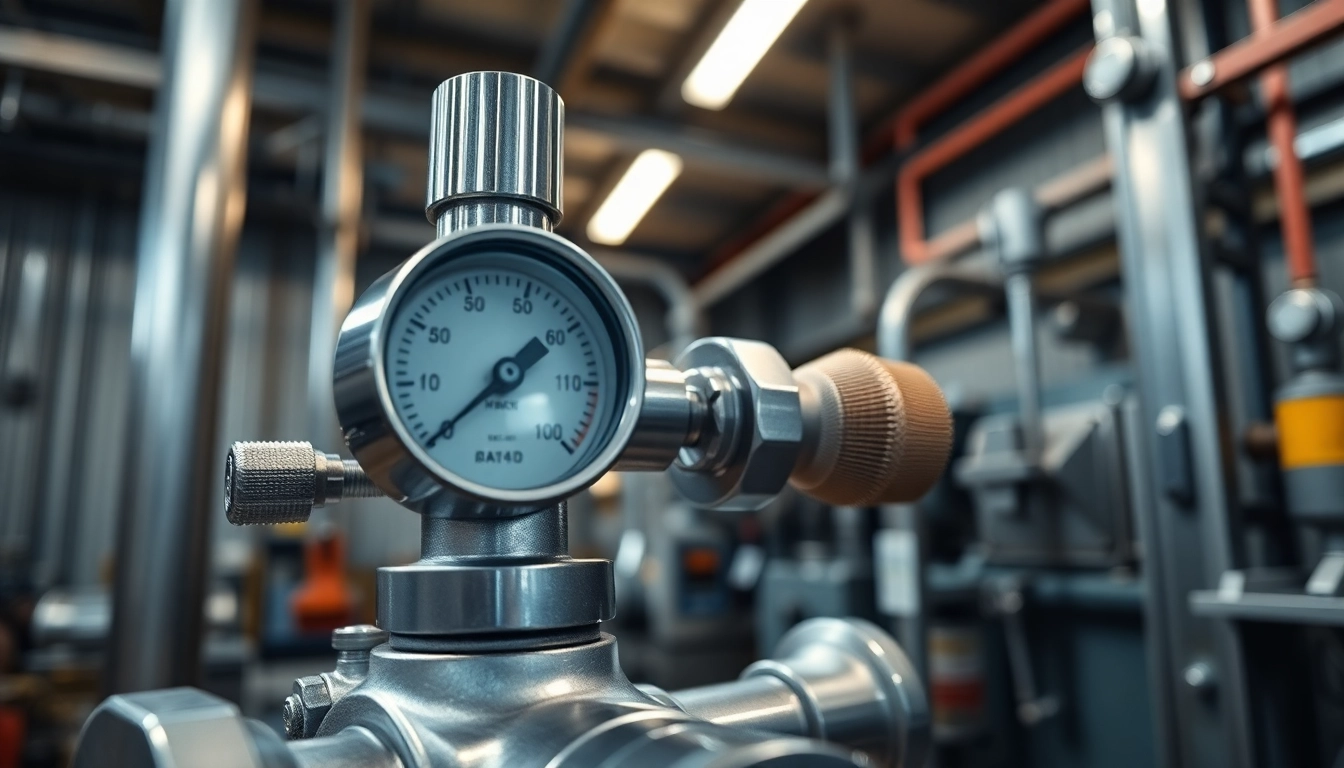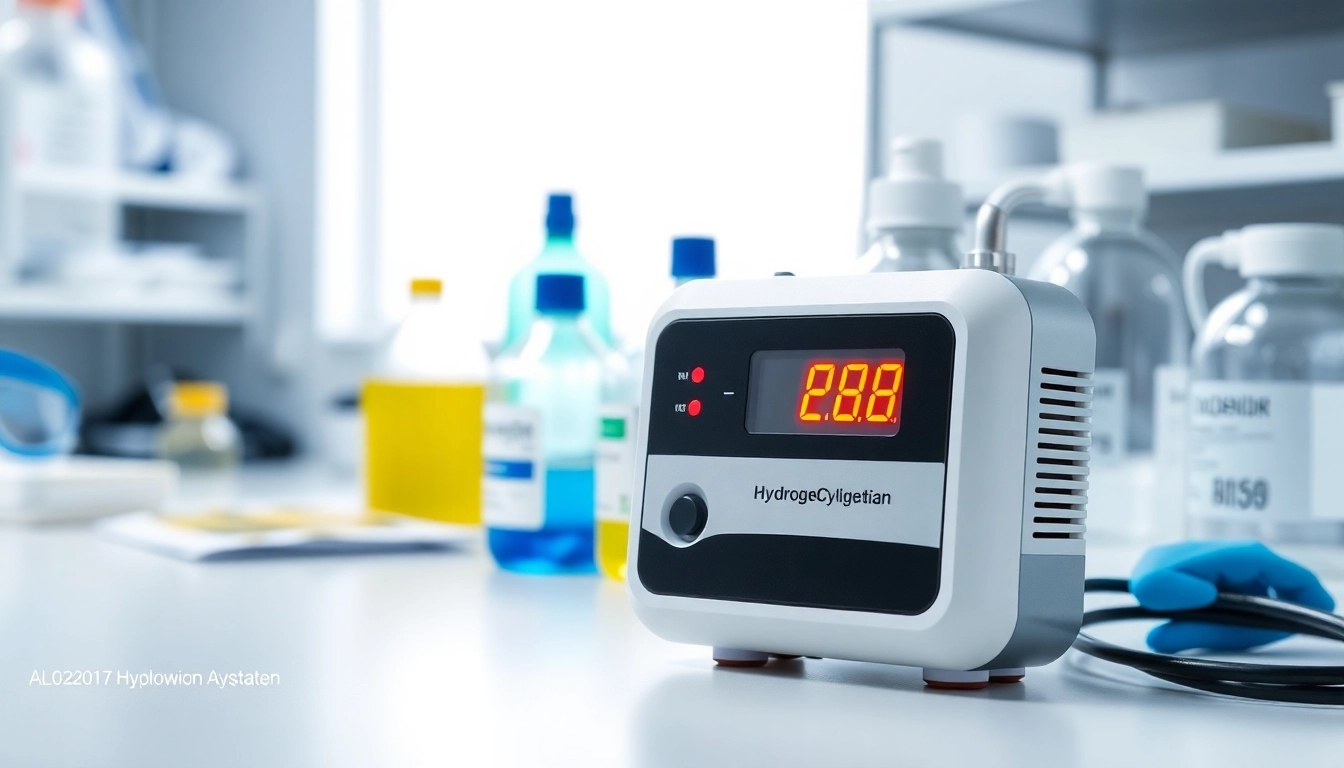Understanding Nitrogen Regulators
Nitrogen regulators are crucial devices used to control the pressure of nitrogen gas flowing from a storage cylinder to various applications. They are essential in industries like healthcare, refrigeration, and beverage services, where nitrogen is utilized for purging, pressure testing, or dispensing. To understand the significance of these devices, it’s important to explore what a nitrogen regulator is, its key components, and how it operates. For those looking for reliable options, options can be found at nitrogen regulator manufacturers.
What is a Nitrogen Regulator?
A nitrogen regulator is a device that reduces the high-pressure gas from a nitrogen cylinder to a usable, lower pressure for various applications. These devices ensure that the pressure of the nitrogen gas is maintained at a constant, safe level, allowing for controlled application in processes such as HVAC systems, refrigeration, and food and beverage services. Without a nitrogen regulator, the high pressure can lead to unsafe working conditions and equipment damage.
Key Components of Nitrogen Regulators
Understanding the key components of nitrogen regulators can aid in appreciating their functionality and importance:
- Pressure Gauge: This component displays the pressure of the nitrogen gas in the cylinder and the outlet pressure for usage. This enables users to monitor and adjust the pressure as needed.
- Adjustable Knob or Handle: Provides an easy way to modify outlet pressure according to specific requirements, such as those needed in beverage dispensing or welding applications.
- Inlet and Outlet Connections: These are the fittings that connect the regulator to the nitrogen cylinder and downstream equipment or hoses. The correct fitting type ensures safe and efficient gas flow.
- Diaphragm: A flexible membrane that reacts to changes in pressure, helping to stabilize outlet pressure and maintain it at a set point.
How Nitrogen Regulators Work
Nitrogen regulators utilize a straightforward mechanism. When nitrogen gas is released from the cylinder, it enters the regulator through the inlet connection at high pressure. The pressure gauge indicates this high pressure while the diaphragm inside the regulator adjusts to control the flow. When the knob is turned, it either opens or closes a valve that directs gas to the outlet. This operation ensures that only a specific, predetermined pressure leaves the regulator, allowing for accurate applications.
Types of Nitrogen Regulators Available
Design variations in nitrogen regulators cater to different applications, pressure requirements, and gas flow needs. Understanding the types available can guide professionals in selecting the right equipment for their operations.
Single Outlet vs. Dual Outlet Nitrogen Regulators
One of the primary distinctions among nitrogen regulators is between single outlet and dual outlet types:
- Single Outlet Regulators: These regulators provide one outlet and are typically used for straightforward applications where pressure stabilization is required for a single piece of equipment. They are commonly found in home brewing and small refrigeration units.
- Dual Outlet Regulators: Featuring two outlets, these regulators are ideal for applications requiring simultaneous operations, like in industrial processes where multiple lines may need nitrogen at the same pressure. This flexibility can save time and ensure consistency across different operations.
Adjustable vs. Preset Nitrogen Regulators
The choice between adjustable and preset nitrogen regulators often depends on the specific requirements of the application:
- Adjustable Regulators: Allow users to change the outlet pressure as needed. This feature is valuable in processes that may require regular adjustment, such as varying pressures for different beverages in a bar setting.
- Preset Regulators: These are set to a fixed outlet pressure, suitable for applications where consistency is key. They can be used in settings like laboratories or medical applications where safety and precision are paramount.
Applications of Different Nitrogen Regulator Types
The applicability of nitrogen regulators spans various sectors and uses:
- Food and Beverage Industry: In beverage dispensing, nitrogen regulators maintain the pressure necessary to serve draft beer and other nitrogen-infused drinks effectively.
- HVAC Systems: Professionals use nitrogen regulators to pressure-test HVAC systems, ensuring there are no leaks before service.
- Industrial Processes: In manufacturing environments, nitrogen is utilized for blanketing, purging, or pressure testing equipment, where precise pressure control is crucial.
- Laboratories: Nitrogen regulators manage the flow of nitrogen in sensitive scientific experiments, where stability in pressure is necessary.
Choosing the Right Nitrogen Regulator
Selecting the correct nitrogen regulator is essential for efficiency and safety. Various factors must be weighed in the decision process to ensure optimal performance.
Factors to Consider When Selecting a Nitrogen Regulator
When choosing a nitrogen regulator, consider the following:
- Application Requirements: Determine what the primary use will be (e.g., food service, industrial testing) and choose a regulator that meets those specifications.
- Pressure Ranges: Ensure that the regulator can handle the necessary pressure range required for the application.
- Connection Sizes: Verify that the inlet and outlet connections match your existing equipment, which is important for safety and efficiency.
- Brand Reliability: Opt for recognized brands known for producing reliable products, including those backed by warranties and good customer support.
Common Pitfalls to Avoid
When selecting and using nitrogen regulators, be wary of common mistakes:
- Underestimating Pressure Requirements: Failing to assess the actual pressure required for your applications can lead to operational inefficiencies.
- Ignoring Compatibility: Not ensuring compatibility with existing lines and equipment can result in leaks or pressure fluctuations.
- Choosing the Wrong Type: Misjudgments in the type of regulator (single vs. dual outlet) can result in underperformance or wasted resources.
Top Brands and Models to Consider
The market offers a range of nitrogen regulators, but a few brands stand out for their quality and performance:
- Victor: They offer both single and dual outlet regulators, known for their reliability and precision in various applications.
- Airgas: Their range includes both adjustable and preset nitrogen regulators suitable for both industrial and research applications.
- Uniweld: Known for manufacturing robust nitrogen regulators that cater to unique applications such as pressure testing and purging.
Best Practices for Using Nitrogen Regulators
Implementing best practices in using nitrogen regulators can significantly enhance safety and efficiency.
Installation Steps and Safety Precautions
Proper installation is key to functionality:
- Ensure that the regulator is designed for nitrogen use.
- Before installation, inspect the cylinder and regulator for damages.
- Securely attach the regulator to the nitrogen cylinder, ensuring tight seals to prevent leaks.
- Check the function of the pressure gauge before use.
- Maintain a safe distance from ignition sources during operation, as nitrogen can displace oxygen.
Adjusting and Maintaining Your Nitrogen Regulator
Regular maintenance ensures longevity and effectiveness:
- Routine Inspections: Periodically check for leaks and ensure that all components, including hoses and gauges, are in good condition.
- Calibration: Ensure that adjusting knobs and pressure settings are calibrated correctly to avoid fluctuations in pressure during operation.
- Cleaning: Keep the regulator clean to prevent dust and debris from affecting performance.
Common Issues and Troubleshooting Tips
If issues arise with a nitrogen regulator, the following troubleshooting steps can be taken:
- Inconsistent Pressure: Check for blockages or leaks in connections.
- Gauge Malfunction: If gauges are not reading accurately, consider recalibrating or replacing them.
- Unusual Noise: Noises may indicate internal wear or damage; review the parts for needed replacements.
Frequently Asked Questions About Nitrogen Regulators
What Is the Purpose of a Nitrogen Regulator?
The primary purpose of a nitrogen regulator is to control the outlet pressure from the nitrogen gas cylinder. This function is critical for ensuring tools and processes operate at safe and effective pressure settings.
Can I Use a CO2 Regulator for Nitrogen?
No, while they may look similar, nitrogen and CO2 regulators are designed for different pressure needs and gas states. A nitrogen regulator dispenses gas, which requires a higher pressure capability, unlike CO2 which can dispense in liquid form.
How to Properly Store Nitrogen Regulators
Proper storage of nitrogen regulators includes storing them in a dry, cool place away from direct sunlight and any combustible materials. Always keep regulators in their protective caps and away from areas with high traffic to prevent accidental damage.



